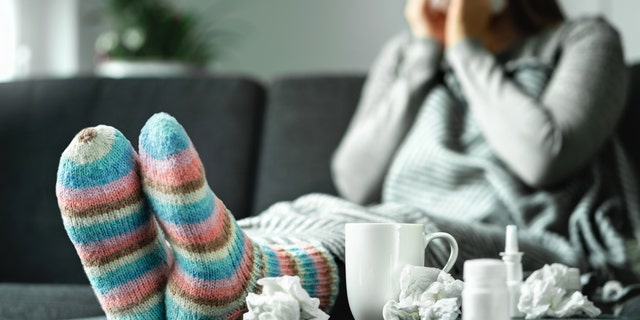A loss of taste and smell has become a telltale sign of a coronavirus infection for many, experts have said, with a new study published this week finding just how common this is for those who have suffered from a mild case of COVID-19.
In a study published on Tuesday in the Journal of Internal Medicine, researchers found that some 86% of people with a mild case of the coronavirus lost their sense of taste and smell.

The study involved more than 2,500 patients across 18 European hospitals. (iStock)
The study involved more than 2,500 patients across 18 European hospitals.
“[Olfactory dysfunction] is more prevalent in mild COVID-19 forms than in moderate-to-critical forms,” the researchers said in the study, noting that according to their research, 75% to 85% of people regained their ability to taste and smell two months after their infection, while 95% of patients regained their ability to taste and smell at six months.
UK CORONAVIRUS VARIANT MOST LIKELY TO SPREAD AMONG THIS AGE GROUP, STUDY SUGGESTS
An estimated 5% of patients, however, still had not regained this ability by six months.
By comparison, only about 4% to 7% of those with a “moderate to severe” COVID-19 infection reported losing their loss of taste and smell.
Interestingly, the researchers also found that younger COVID-19 patients were more likely to lose their sense of taste and smell compared to older patients, though the reasoning behind this requires further analysis, they noted.
As for why those with mild cases of COVID-19 were more likely to report losing their loss of taste and smell, the researchers offered an explanation.
UK CORONAVIRUS VARIANT LIKELY ALREADY IN THIS STATE, DOCTOR WARNS
“The main hypothesis underlying the higher prevalence of anosmia in mild COVID-19 would consist of differences in the immune response to the infection in mild and moderate-to-critical patients. In this hypothesis, patients with mild COVID-19 could have a better local immunological response through a higher production of IgA, which could limit the virus spread into the organism. The limited virus spread in the host body could therefore be associated with a mild clinical form of the disease,” they wrote, in part, adding that more studies are needed to prove this theorem.
“[Olfactory dysfunction] is a prevalent disorder in COVID-19 patients with a higher prevalence in patients with mild forms of the disease. At the two-month follow‐up, 75% to 85% of patients recovered olfaction according to subjective and objective olfactory evaluations. Future studies are needed to determine the long‐term recovery rate of COVID-19 patients,” the researchers concluded.